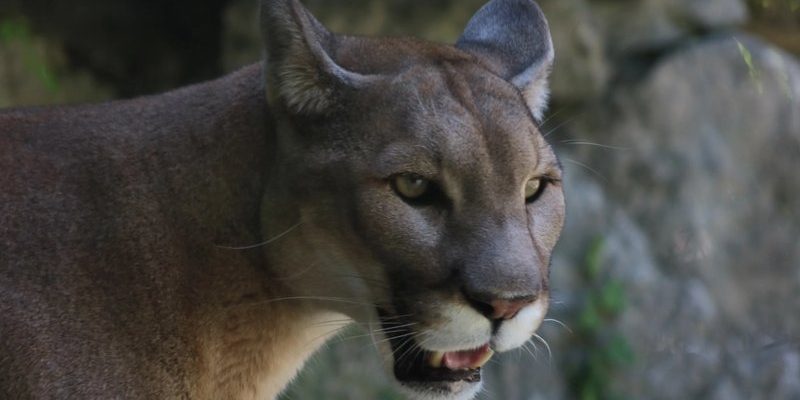
Honestly, it’s a fair question. Many people might feel a mix of awe and fear when they hear about cougars in the wild. They’re predators, after all, and understanding their behavior can help us stay safe if we ever cross paths with one. So, let’s dive into the world of the cougar and explore the factors that influence their interactions with humans.
Understanding Cougars: Nature of the Beast
Cougars are solitary animals, primarily native to the Americas, and they’re known for their adaptability. They can thrive in various habitats, from mountains to deserts. Their sleek, muscular bodies make them efficient hunters, primarily preying on deer, small mammals, and even birds. But remember, cougars are not naturally inclined to attack humans. Most encounters are more about curiosity than aggression.
You might be wondering about their behavior in the wild. Cougars are generally shy and avoid humans whenever possible. They tend to steer clear of populated areas. In fact, they are most active during dawn and dusk, which helps reduce their chances of crossing paths with people. Honestly, if you respect their space and understand their habitat, the risk of an encounter is quite low.
However, the rise of human encroachment into their territories can lead to more frequent sightings. As we expand our towns and cities into wild areas, we may increase the likelihood of running into a cougar, especially if they’re exploring for food or a new territory.
When Do Cougar Attacks Happen?
Attacks by cougars on humans are extremely rare, but they can happen under certain conditions. Most incidents occur when a cougar feels threatened, or when a person is too close to their young cubs. Just like any parent, a mother cougar will defend her young fiercely. This protective instinct is crucial for her cubs’ survival.
Another common scenario happens when cougars are cornered or surprised. If a cougar feels it has no escape route, it might resort to attacking. But such situations are far from common. In fact, the odds of encountering a cougar in the wild are akin to winning a small lottery — it can happen, but it’s not something you’d bet on.
People often think that cougars are aggressive and will attack anyone they see. But here’s the thing: cougars are opportunistic hunters. They prefer prey that’s easier to catch, such as deer or livestock, and typically avoid humans.
Signs of Cougar Presence
If you’re in cougar territory, knowing how to spot signs of their presence can be beneficial. Here are some things to look for:
- Tracks: Cougar paw prints are large and resemble a cat’s, but much bigger. They have a rounded shape with no visible claw marks.
- Scrapes: Cougars leave scrapes on trees, which is a way for them to mark their territory. The telltale signs often include scratches at a height that suggests a large animal.
- Scat: Their droppings can contain fur, bones, or plant material, indicating what they’ve been eating.
If you can recognize these signs, you can better assess your surroundings. If you do come across any, it’s wise to be cautious and make your presence known by making noise or backing away slowly.
How to Stay Safe in Cougar Country
If you find yourself in an area known for cougar activity, there are several steps you can take to minimize risks. Here’s a quick breakdown:
- Stay alert: Pay attention to your surroundings, especially when hiking or biking. Avoid distractions like headphones.
- Travel in groups: Cougars are less likely to approach a larger group. There’s safety in numbers!
- Carry deterrents: Items like bear spray can be effective against cougars too. If you ever feel threatened, having something on hand could help.
- Make noise: Talk or sing as you walk. This alerts cougars to your presence and encourages them to stay away.
If you happen to encounter a cougar, avoid turning your back or running away. Instead, stand tall, maintain eye contact, and speak firmly. This behavior can keep you safe, as it shows that you’re not prey.
What to Do During an Encounter
If you ever find yourself face-to-face with a cougar, your initial reaction is crucial. Here’s how to handle it:
1. Stay calm: Take a deep breath. Panicking can make the situation escalate.
2. Make yourself look bigger: Raise your arms, open your jacket, or pick up a stick. This can make you appear more intimidating.
3. Maintain eye contact: Do not look away. This shows the cougar that you’re not afraid and are aware of its presence.
4. Back away slowly: Don’t run. This might trigger a chase response. Instead, retreat while keeping an eye on the animal.
Most cougars will avoid confrontation if they realize you are aware of them. They prefer to stalk their prey stealthily, not engage in a standoff.
The Myths Surrounding Cougars
Cougars often get a bad rap, and many myths have emerged over time. One common myth is that they are vicious beasts waiting to pounce on unsuspecting humans. In reality, cougars are elusive creatures that prefer to avoid humans.
Another myth is that feeding wildlife, like deer, can attract cougars. While it’s true that cougars follow their prey, cougars are also equipped with hunting skills that don’t require humans to feed them. Thus, they are more than capable of finding food on their own.
Understanding these myths can help ease your fears about cougars. They’re part of the ecosystem and play a vital role in controlling deer populations and maintaining a balanced environment.
The Bottom Line: Respecting Cougars
In summary, while cougars can be dangerous under certain circumstances, attacks on humans are rare. By understanding their behavior and respecting their space, you can minimize risks significantly. Just think of them as neighbors who prefer to keep to themselves.
Being aware of their presence and learning how to act in their territory is key. Cougars are an important part of our ecosystem and, with the right knowledge, we can coexist peacefully. So next time you’re out in the wild, keep your senses sharp and embrace the beauty of nature—cougars included!

